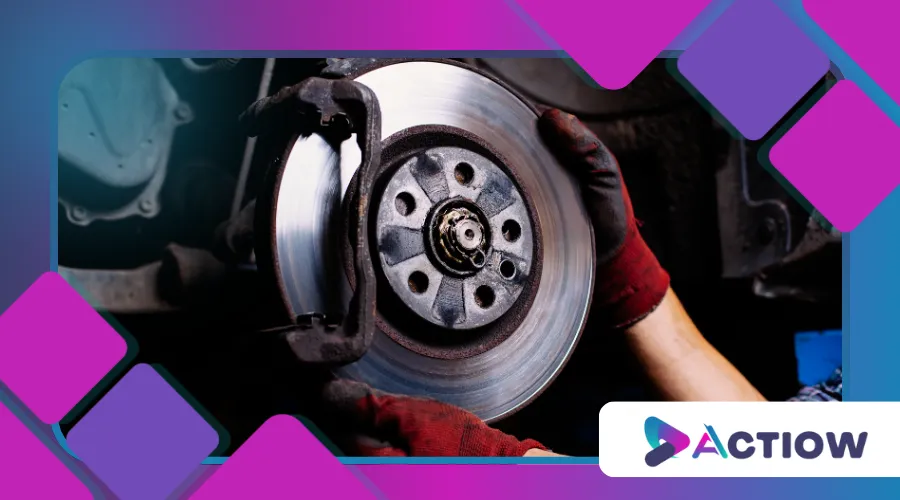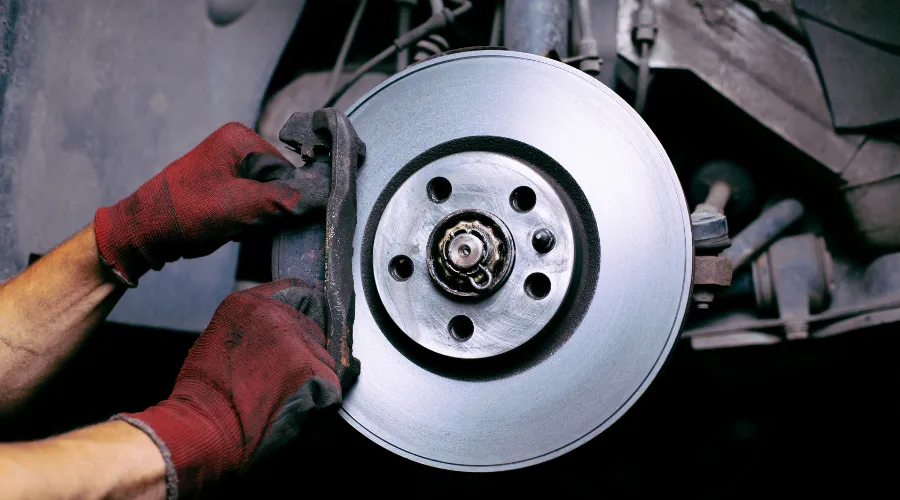How to Avoid Premature Brake Wear

Anúncios
Premature brake wear is a common yet avoidable issue that plagues many drivers.
Whether you’re navigating city streets or cruising on highways, excessive wear can shorten your brake system’s lifespan, leading to costly repairs.
But with the right knowledge, you can extend the life of your brakes while enhancing safety and performance.
Anúncios
Understanding the factors that contribute to brake wear can empower you to make informed decisions about your driving habits and maintenance practices.
By being proactive, you can ensure that your vehicle remains safe and efficient over time.
This guide dives into the causes of premature brake wear, actionable prevention strategies, and expert-backed maintenance practices.
We’ll also explore how driving behavior, environmental factors, and component quality impact brake longevity.
Taking the time to learn about these aspects can significantly enhance your overall driving experience.
With the right approach, you can save money and improve your vehicle’s performance.
Why Do Brakes Wear Out Too Soon?
Several factors contribute to premature brake wear, but the most prevalent is aggressive driving.
A study by the National Highway Traffic Safety Administration (NHTSA) found that frequent hard braking can reduce pad life by up to 35%.
Other culprits include:
- Low-quality brake components – Cheap pads and rotors wear faster.
- Riding the brakes – Constant pressure generates excessive heat.
- Environmental conditions – Salt, moisture, and dirt accelerate corrosion.
- Misaligned calipers – Uneven pressure causes irregular pad wear.
Understanding these triggers is the first step toward prevention.
By recognizing how your driving style affects brake wear, you can make adjustments that lead to longer-lasting brakes.
Additionally, staying informed about the quality of the parts you use can help you avoid unnecessary wear and tear.
Driving Habits That Destroy Your Brakes
1. Stop-and-Go Traffic: The Silent Brake Killer
Repeatedly tapping the brakes in heavy traffic wears down pads prematurely.
Instead, maintain a safe following distance and coast when possible to reduce friction.
In stop-and-go situations, try to anticipate traffic flow to minimize sudden braking.
Utilizing smooth acceleration and deceleration can help maintain brake health while improving fuel efficiency.
+ How to Save on Car Maintenance Without Compromising Quality
2. Overloading Your Vehicle
Excess weight forces brakes to work harder.
According to SAE International, every 100 lbs over the recommended limit increases stopping distance by 2–5 feet, straining the system.
Regularly check your vehicle’s load capacity and avoid carrying unnecessary items.
Being mindful of your load can prevent excessive wear on your braking system and improve overall handling.
3. Ignoring Engine Braking
Downshifting (in manual transmissions) or using “Low” gear (in automatics) on downhill stretches reduces reliance on friction brakes, preventing overheating.
This technique not only saves your brakes but also enhances control on steep descents.
Learning to use engine braking effectively can improve your driving skills and prolong the life of your brake components.

Maintenance Tips to Prevent Premature Brake Wear
1. Choose High-Quality Brake Components
Not all brake pads are created equal.
Ceramic and semi-metallic pads last longer than organic ones, especially in high-performance or heavy-duty driving.
Comparison of Brake Pad Types
| Type | Durability | Noise Level | Best For |
|---|---|---|---|
| Organic | Low | Quiet | Light city driving |
| Semi-Metallic | Medium | Moderate | Performance cars |
| Ceramic | High | Very quiet | Luxury vehicles |
Investing in quality components can lead to significant long-term savings.
High-quality pads and rotors not only enhance performance but also reduce the frequency of replacements.
2. Regular Inspections Are Non-Negotiable
Worn pads, leaking fluid, or warped rotors accelerate premature brake wear.
Inspect your brakes every 12,000 miles or as recommended in your owner’s manual.
Routine checks can catch issues before they escalate, saving you money and ensuring safety.
Establishing a regular maintenance schedule can help you stay on top of your vehicle’s needs.
3. Flush Brake Fluid Every 2 Years
Moisture-contaminated fluid reduces braking efficiency and increases wear.
A simple flush prevents corrosion inside the system.
Keeping your brake fluid clean can enhance overall braking performance and prolong the life of your components.
Consider consulting with a professional to determine the best maintenance schedule for your vehicle.

++ Maintenance of Electric Cars: What You Need to Know
Environmental Factors You Can’t Ignore
1. Winter Driving Hazards
Road salt and slush corrode brake components.
Rinse your wheels weekly in cold climates to prevent rust-induced wear.
Being proactive in winter maintenance can significantly reduce the risk of brake failure due to corrosion.
Investing in protective coatings can also help shield your brake components from harsh winter conditions.
2. Off-Road & Dusty Conditions
Dirt and debris grind against rotors, thinning them prematurely.
Consider upgrading to coated rotors if you frequently drive on unpaved roads.
These specialized components can withstand harsher conditions and provide better longevity.
Being aware of your driving environment can help you make informed choices about your maintenance practices.
Signs Your Brakes Are Wearing Too Fast
Catching premature brake wear early saves money and prevents accidents.
Watch for:
- Squealing or grinding noises – Worn indicator tabs or metal-on-metal contact.
- Vibrations when braking – Warped rotors need resurfacing or replacement.
- Longer stopping distances – Pad material is too thin to generate proper friction.
Being vigilant about these signs can help you address issues before they become serious.
Regularly monitoring your braking performance can enhance your overall driving safety.
For more information on brake maintenance, visit Brake Performance.
The Cost of Neglect: Repair vs. Prevention
Ignoring early warnings leads to expensive fixes.
Compare the costs:
Brake Service Cost Breakdown
| Service | Average Cost | Frequency |
|---|---|---|
| Pad Replacement | $150–$300 | Every 30,000–50,000 mi |
| Rotor Resurfacing | $200–$400 | As needed |
| Full Brake Job | $500–$900 | Every 70,000 mi |
Proactive maintenance cuts long-term expenses by up to 50%.
Understanding the financial implications of neglect can motivate you to prioritize maintenance.
Investing in regular upkeep today can prevent costly repairs tomorrow.
Final Thoughts: Brake Smarter, Not Harder
Premature brake wear isn’t inevitable—it’s often a result of overlooked habits and deferred maintenance.
By adopting smoother driving techniques, investing in quality parts, and sticking to a service schedule, you can double the lifespan of your brakes.
Next time you hit the road, ask yourself: Am I braking efficiently, or am I burning money?
The answer could save you hundreds.
This resource offers valuable insights and tips to help you maintain your brakes effectively.
Did you find this guide helpful? Share your best brake-saving tip in the comments!
